
Recently I conducted some target audience research. And I learned something tasty—and a bit unexpected. Ready?
Successful marketers are 242 percent more likely to report conducting audience research at least once per quarter. And 56 percent of my study’s most elite marketers conduct research once or more per month.
So, researching your target audience is a marketing must. And not just for product development—it’s a gateway to connecting with your audience in revelatory ways.
Really, it’s the nuts-and-bolts of what Jay said in his book Youtility: “What if instead of trying to be amazing, you just focused on being useful? What if you decided to inform, rather than promote?”
Target audience research is a way of doing just that—of turning the spotlight from your stuff to their needs. In essence, it’s about going from this:

To this:
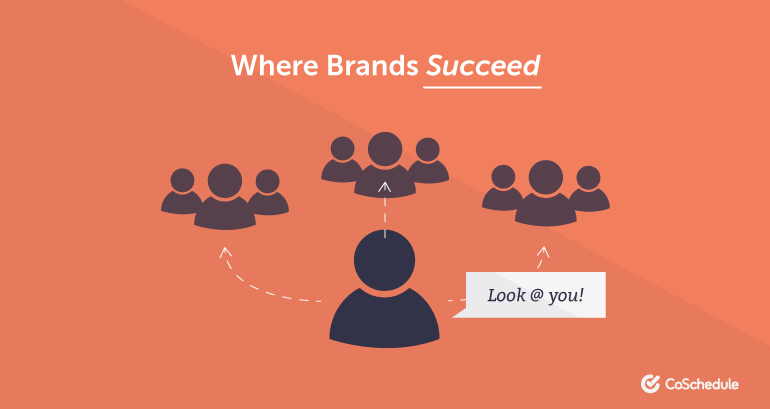
It’s just like finding your content core. Surveys, customer interviews, and other forms of feedback help you laser-focus on the intersection of your audience’s problems and your ability to help solve them.
That big audience research project I mentioned was primarily about learning the strongest predictors of marketing success. We certainly gained some insight and fascinating data. Here are three quick highlights:
- Top marketers document their digital marketing strategy.
Marketers who document strategy are 538 percent more likely to report success than those who don’t. - Top marketers document their marketing processes.
Marketers who document process are 466 percent more likely to report success than those who don’t. - Top marketers set goals.
Marketers who set goals are 429 percent more likely to report success than those who don’t. And 81 percent of those successful, goal-setting marketers achieve them.
But the most valuable learning came from getting a peek into our target audience. You know, what they care about. The challenges they face. The gaps between their success and failure.
I’d like to share the “why” and “how” of using research on your target audience to increase resonance with them across your marketing channels. Hint: It’s about a shift in mindset and, in turn, resource investment—from “look at me!” to, “Look at you! Now let’s make your life better!”

Your Process for a Target Audience Survey
The best news is researching your audience is easier than ever. It’s a genuine low-cost, high-reward activity, and it’s one of the quickest ways to separate yourself from the marketing herd. After all, we discovered 65 percent of marketers rarely conduct research (if at all)!
So let’s gear you up with an easy, three-step process, plus a template to rock target audience research like a pro. We’ll use the example of conducting a survey throughout. Though, if this is new territory for you, be pretty generous with your definition of “target audience research.” Heck, I’d even count picking up the phone for some customer convos or shooting off an email or two.

Alright, let’s rock.
Step One: Check Your Assumptions
To start, you gotta check your assumptions. We all have them. And research is the best way to prove or bust them. It’s like what Mark Twain said: “What gets us into trouble is not what we don’t know. It’s what we know for sure that just ain’t so.”
For example, I put two marketing assumptions to the test:
- Content is king. Marketers who spend more time creating content will say their marketing is successful.
- Quality over quantity. Marketers who have higher quality content will say their marketing is successful.
After all, what content marketer worth their salt doesn’t accept a “quality > quantity” mindset? I certainly did. But here’s what the data says:
- There is no correlation between time spent creating content and reported marketing success.
(R = 0.02; n = 1,597; p-value < 0.0001) - There is some positive correlation between content quality and marketing success, but nothing earth shattering.
(R = 0.29; n = 907; p-value; p-value < 0.0001)
What this showed me is that the question isn’t simply, “Are you creating epic, high-quality content?” It is, “Are you creating the right kind of epic, high-quality content?”
Relevant content is resonant content.
To start, make sure to download the “Target Audience Research Starter Template.”

The first sheet is labeled the “Assumptions Buster.” In column A, insert your audience persona or brief description of your target audience. Next, list an assumption about that audience segment plus your reasoning behind said assumption. Then you’ll start brainstorming the questions to prove or disprove this assumption.
For best results, list as many relevant assumptions as you can think of for each persona or segment. You don’t have to test them all. But the more you outline, the better your questions will be.
The final column on this sheet will be for revisiting once you’ve completed your survey. This is where you can confirm an assumption—or put it to rest for all eternity. ⚰️ (Or at least until your next survey.)
Step Two: Craft Your Questions
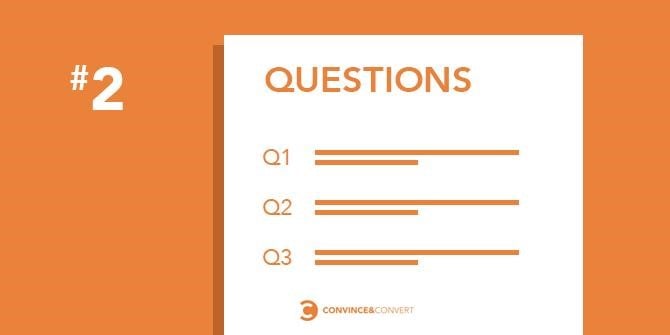
Next, you’ll move the best questions from sheet one onto sheet two, labeled “Survey Questions.” Remember, your data is only as good as your questions, so clear, concise, and relevant questions are your survey’s lifeblood.
My favorite article on writing survey questions comes from Qualtrics. They outline the 10 Commandments for killer survey questions. (Definitely worth a read!) I’ll synopsize what I found to be the three most important considerations.
- Avoid loaded or leading words: Don’t use words like “could,” “should,” or “might.” They may sound the same but can be interpreted differently.
- Avoid non-specific questions: A question with issues of “meaning” or “frequency” is hard to specify. For instance, with the question, “Do you watch TV regularly?”, what does “regularly” mean?
- Avoid non-exhaustive listings: If you’re listing multiple-choice answers, give people an “Other (please specify)” option—unless you can cover 100 percent of the choices. This is an excellent candidate for pretesting.
This is where sheet two comes in.

Your questions belong in column A. Next, note what type of question you’re asking. Here are some ideas (though non-exhaustive).
Simple question types:
- Free text: Simple text entry, y’all. These are incredibly insightful if you’re trying to pick up on the language your target audience uses. However, it’s also the most labor-intensive at high volumes and makes it tough to run any kind of regression.
- Multiple-choice: This is the great scholastic standard—multiple, pre-written answers to choose from. These are great to run total percentages on for comparisons against the entire sample. Just keep in mind that if you can’t provide an exhaustive list covering all possibilities, leave room for an “Other option” selection so you don’t force inaccurate answers. (Hint: Remember, C is always the best guess. Just kidding!)
- Binary: Yes or no. Hot or cold. ‘Nuff said.
- Scale: These questions can run the gamut of “Strongly Agree” to “Strongly Disagree.” With these, make sure to give folks a “Neutral” option if the question isn’t completely relevant to them.
After you’ve knocked out your questions, consider using a pilot survey to give your questions a test drive. This way you can ensure people understand what you mean.

I ran a test pilot survey with some feedback questions at the end:
- Were any questions confusing? If so, which?
- Did any questions seem irrelevant to your situation? If so, which?
Then I took the responses and cleaned up the frequent offenders.
Step Three: Crunch The Numbers
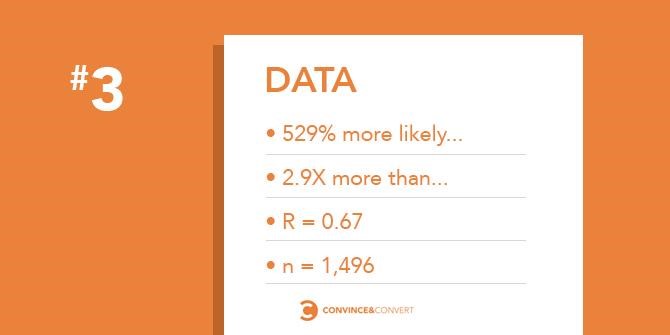
Now it’s time to get nerdy and run some numbers. ? Excel is an easy tool for this. And if you want some quick visualizations, Tableau is a nice tool as well. (If you wanna go ultra-nerd, you can even learn R or Python.)
If you’re serious and have some big data to crunch, two things you’ll want to do well in Excel is use the CORREL function to get the correlation coefficient. And the next is to simply use cells to calculate normal distribution probabilities. (Neither of these is as scary as it sounds!)
Your correlation strength is known as an R-value. It’s measured on a scale from -1 to 1, with 1 being 100 percent correlated, and -1 being 100 percent negatively correlated. What you’re looking for are patterns that signal whether or not two factors have a chance of impacting the other. For example, take a peek at the example CORREL function from your template.
First, select the CORREL function:
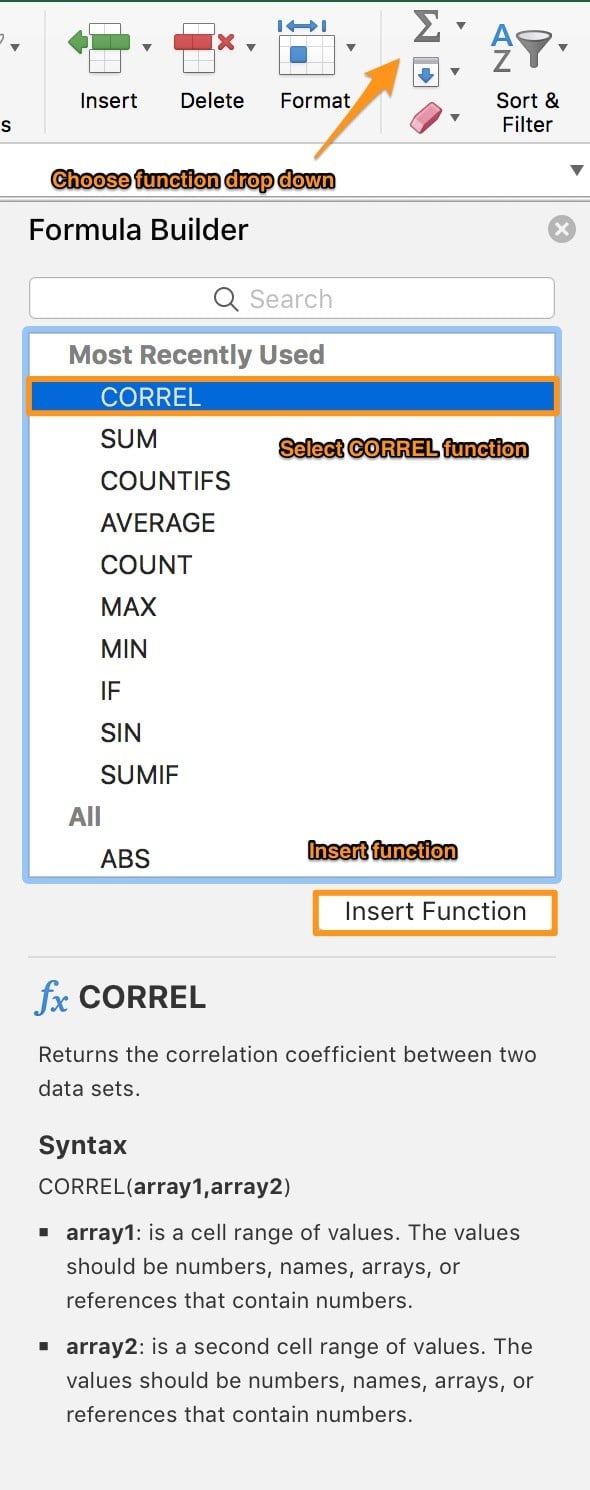
Next, choose the arrays (or list of cells) you’re going to compare:

Then, the cell you inserted the function into will output the correlation, or R-value, between the two datasets.
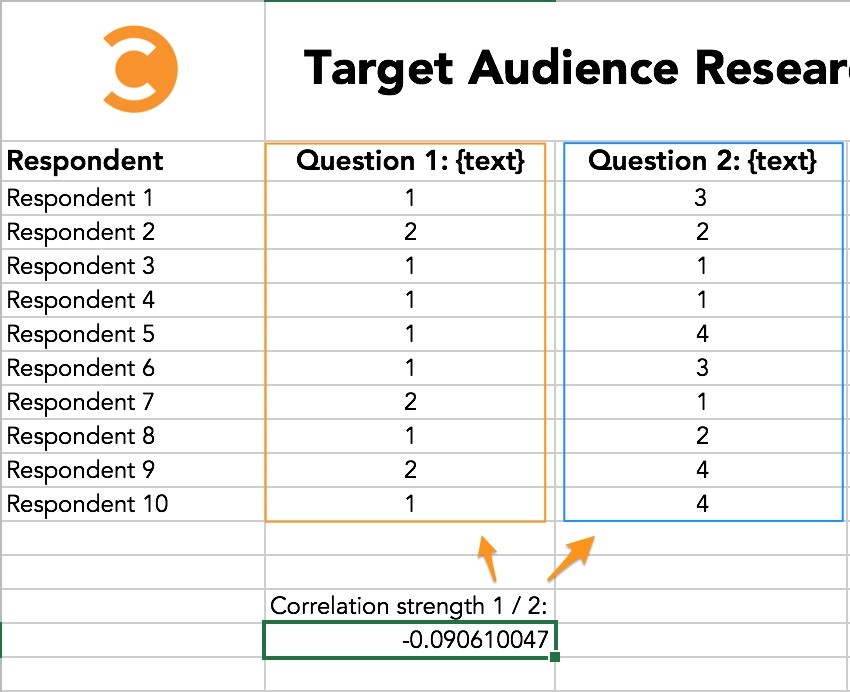
From here, you can dig into “why” these data points are correlated positively or negatively.
And remember, correlation does not equal causation, so ensure to take your context into consideration to use your original research like the savviest of marketers.
Now Go Research!
You’re all set to rock some target audience research. Obviously, you can delve far deeper and use more expansive methods. But if you’re new, this is a high-return place to start. Now sink your teeth into some research, and do the best (and most resonant) marketing of your career!

